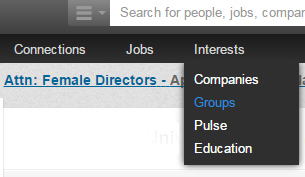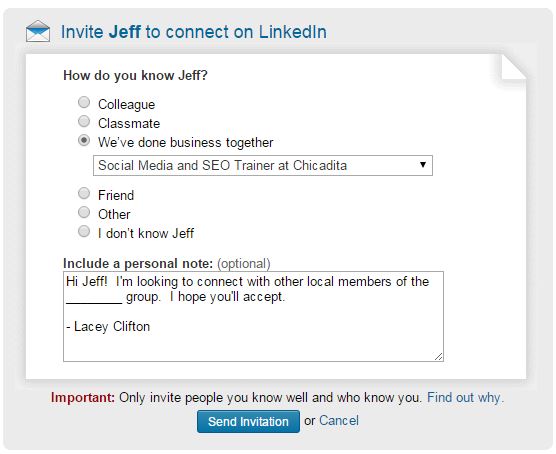With the highest average annual income of any other major social media platform and access to C-level executives without their gatekeepers, many business-to-business (B2B) entrepreneurs are starting to notice LinkedIn as a new frontier for their social media strategy.
But what I’ve been seeing lately is a lot of ineffective over-clicking of that “Connect” button. Did you know there are better ways to connect with your target audience on LinkedIn than blindly clicking?
LinkedIn Groups are certainly the easiest way to start. To be seen as an industry leader, you can join groups filled with your competition and post news and insight. Most people start here, but if I sell insurance, I don’t need or want 2,000 LinkedIn connections that also sell insurance. There’s no profit here. For marketing purposes, look for groups of people who are likely leads – your target audience.
If you haven’t already done this, take a moment to write down the characteristics (career, income, interests, obstacles, etc.) of your ideal consumer or most profitable client. If I operate a business for yoga retreats, my consumer would be the average yoga enthusiast (45-54 year-old female, income over $75,000, college-educated), but my most profitable client is going to be the decision-making executive who can sign up their company for a corporate retreat, for example. I know LinkedIn is the right place to market to this audience because it caters to the older, college-educated, higher-income user.
That will give you something to look for in the groups: female executives, female directors, female human resources directors, and so on. Read the group descriptions and make sure you are a fit for them. I work with a lot of doctors and surgeons, but not all LinkedIn groups are open to people who are not actually a surgeon. Don’t forget to search for and join all of your local groups, too. Even if you want to be a national service, you have to start somewhere, so start with the people you can reasonably go meet with face-to-face first.
By joining groups, you can instantly be in touch with thousands of people. So reach out and touch them! Leads need to be worked, tickled, touched, massaged (who decided these were the colloquial words for lead nurturing, anyway?) and you’ll do this by logging in every day or two and joining in on the conversation. Don’t spam the groups with your own marketing agenda, though. Share useful content for different sources, comment and ask questions on other posts, and engage with people. As your name and image become familiar on the discussion boards, you’ll gain followers and be able to approach people for the valued connection.
Connecting with 8,000 people who don’t fit your consumer profile is a waste of time, so here is how you can filter groups down to find your target audience:

- In Groups, go to Members.

2. Above your name, use the search bar to search within the group. Keep in mind, people have a lot of free text fields on LinkedIn, so you’ll be repeating this step many times with different criteria. In this group of over 7,500, I can type in “yoga” and get 65 results. I get to see their title, where they work, and where they live on the results page, making it easy to go down the list and connect with them all, or in this case, one is a yoga instructor, so I can skip her. For a time, LinkedIn had the option to connect simply because we were in the same group. While I’m writing this, it isn’t an option, but that doesn’t mean it don’t be a radio button again soon.

3. When you send the request, take the time to write something unique explaining why you want to connect. LinkedIn was built with the intention of connections only being people we’ve already met, which is why it stops displaying your number of connections after 500, but it’s been evolving over the years. Some people have thousands and thousands of connections because they are a blogger and the “Follow” feature on LinkedIn has changed so many times that no one really knows how/if to use it. Others have high volume because they are sales people and know the value of LinkedIn. Others, still, are simply spammers, but LinkedIn takes a lot of measures to keep users’ inboxes clean, so be courteous in your requests and never spam. In this example, I might send a connection request based on the group I found the leads in or how I filtered them out, such as, “I wanted to connect with you because I saw you are interested in yoga and it is also something I am very passionate about.” I also like to just simply say, “I noticed you are also a local small business owner and thought we should connect!” Keep it short, simple, and on topic.

4. As people start to accept your requests, remember to be posting to your stream. Just like with the groups, you want to post relevant, insightful content here. No more than 25% of your posts should be self-promotional.
Keep repeating these steps in small batches and you’ll be building quality connections on LinkedIn in no time!

OK, You and several other people are telling me this is what I need to do. Time to fill out that “Persona Development Worksheet” and spend more energy on Linked In.
Good post I was able to follow and make some notes on practical things to do.
Thanks!